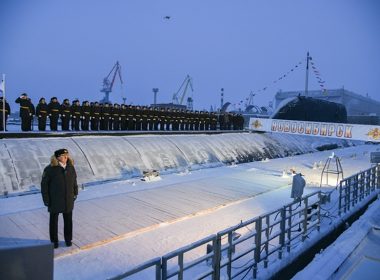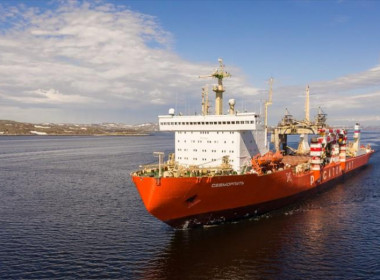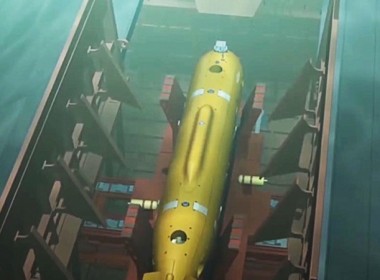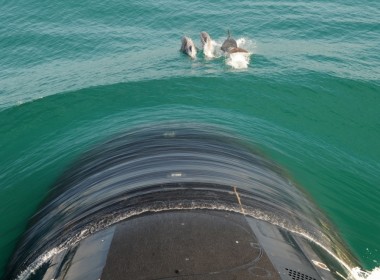OPINION | One year along Australia’s optimal pathway to nuclear-powered submarines

Today marks 12 months since the release of the “optimal pathway” Australia needed to follow to acquire a force of nuclear-powered and conventionally-armed attack submarines (SSNs) under the AUKUS agreement with the United States and the UK.
The milestone has been marked by claims that domestic budget wrangling in the United States is a profound threat to Australia’s submarine plan with the Biden administration proposing to fund only one Virginia-class submarine in fiscal year 2025.
Whilst Australia must be alert to US domestic issues that may affect AUKUS, including the looming presidential elections, to boil the agreement down to simple submarine numbers largely misses the point of the agreement and what’s been achieved so far.
Although the provision of SSNs to Australia is about capability, it is also about signaling to China that deep-seated US relationships in the region matter and should cause Beijing to think twice about its aggressive activities. AUKUS is just one strand of this network, but it is important to US Indo-Pacific strategy.
To renege on the transfer of SSNs to Australia would undermine US credibility and influence in a region with many Southeast Asian states already hedging their bets.
There is, of course, an issue with the US submarine industrial base and much of the US wrangling on AUKUS is geared towards gaining more funding for its own industry. Australia is providing $4.5 billion to help the US step up construction.
“Putting US domestic issues aside, there’s much to like about what the AUKUS optimal submarine pathway has achieved in its first year.”
The US Navy currently plans to have a fleet of 355 surface ships and at least 66 SSNs. It currently has 50 SSNs and, as the Los Angeles-class submarines are gradually decommissioned, this may dip to 46 in 2030.
The US is now building, on average, 1.2 to 1.3 submarines per year. To build up its submarine fleet, it needs to increase that rate to an average two Virginia-class submarines a year. This increases to 2.33 boats per year if the US is to provide three SSNs to Australia in the 2030s.
Reaching and maintaining that rate will be further complicated by the need to prioritise the building of its seaborne nuclear-deterrent replacement, the Columbia-class ballistic missile submarine (SSBN), and addressing the increasing SSN maintenance backlog.
But assuming that the US would automatically renege on the deal to sell Virginias to Australia in the 2030s, because it may not meet its target of 66 attack submarines in 2053, fundamentally misunderstands the US strategy supporting AUKUS.
The US submarine industrial base is a risk, but it is not the sole consideration. Putting US domestic issues aside, there’s much to like about what the AUKUS optimal submarine pathway has achieved in its first year.
When the AUKUS plan was announced in September 2021, the lack of detail and consultation on Australia’s intent to acquire SSNs was apparent. Whilst the project has many critics, greater regional acceptance has been signaled by Singapore Prime Minister Lee Hsien-Loong’s willingness to have Australian SSNs visit his country.
When AUKUS was announced, the three partners undertook to outline a detailed plan for Australia to acquire SSNs within 18 months. A year ago, the nuclear-powered submarine optimal pathway was announced and set out an effective “crawl, walk run” approach.
Phase 1 established submarine rotation force West (SRF-W) with US and UK submarines rotating through HMAS Stirling from 2027. This “crawl” phase would allow Australia to develop the infrastructure, maintenance and stewardship capabilities and skillsets to support nuclear-powered submarines.
Australia will acquire three to five Virginia-class submarines in the 2030s. This “walk” phase is intended to see Australia operate its capability at a smaller scale before proceeding to the “run” phase and sharing the building of a new SSN with the UK.
“Australia will need to meet an ambitious infrastructure and governance plan to convince the US that it is able to safely operate and maintain the capability.”
There’s no denying that this ambitious plan has high degrees of risk—including tumultuous US politics and its lagging submarine industrial base. If it all goes wrong, the age of Australia’s Collins-class submarines would expose it to a capability gap.
But despite a sparse flow of information, particularly for Australian defence industry, the AUKUS SSN optimal pathway appears to be on track.
Having three countries reach agreement on the optimal pathway was no mean feat.
Another significant achievement was the establishment of the Australian Submarine Agency. And Australia has focused heavily on training both its naval personnel and the wider defence industry workforce in submarine operations and maintenance. Australian officers are graduating from the US nuclear-powered submarine school, and maintainers are in Guam learning how to maintain SSNs.
Perhaps the most significant achievement was US Congress passing the National Defence Authorisation Act (NDAA) in December 2024 authorising the transfer of the three promised Virginias to Australia in the 2030s, the maintenance of US submarines in Australia by Australians, and the training of Australian contractors in US shipyards.
It’s not all rosy. Defence agreements of this magnitude never are. The NDAA authorisation of the transfer of course came with caveats, including the requirement for the US President of the day to certify to Congress prior to any transfer that the “submarines would be used for joint security interests” and “Australia is ready to support their operations and nuclear power procedures”.
This endorsement is not a given. Australia will need to meet an ambitious infrastructure and governance plan to convince the US that it is able to safely operate and maintain the capability.
The strategic importance of this agreement is much larger than the issue of the number of attack submarines in the US order of battle, and Australia should not be constantly distracted by US domestic debates over its submarine industrial base.
Despite the plan’s risks, a lot has been achieved in 12 months.








